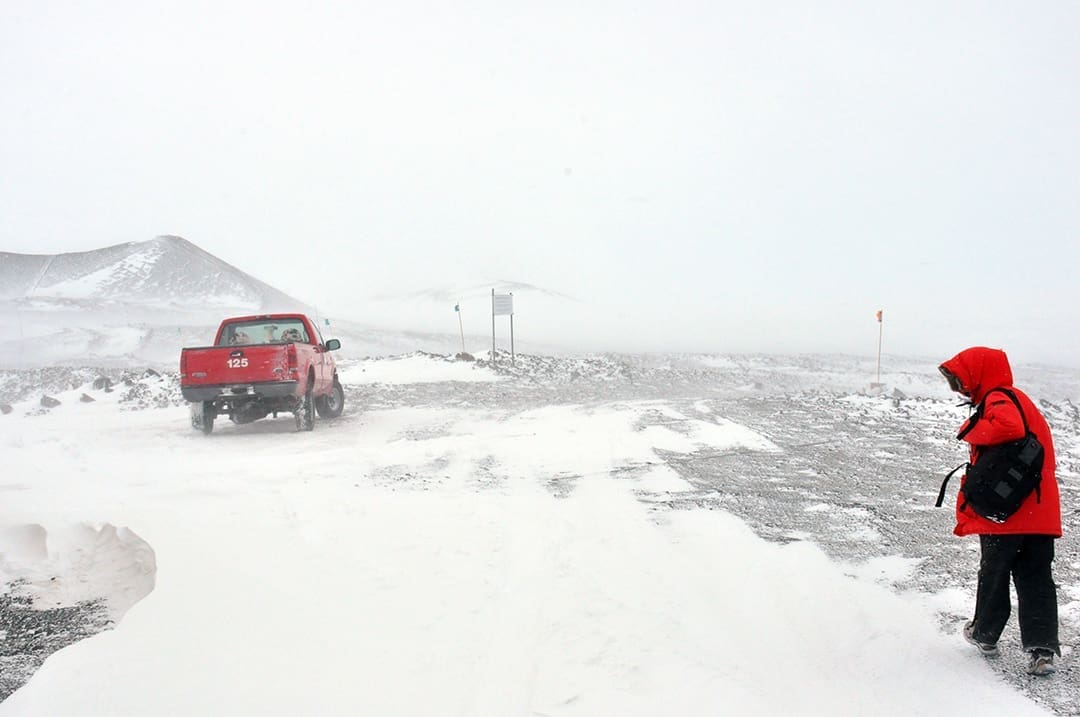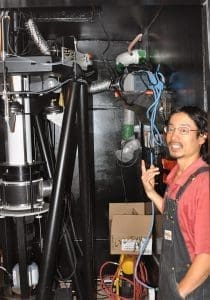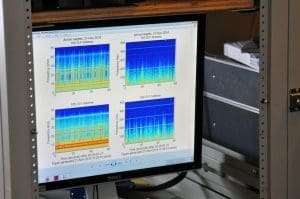Every Lightning Strike
Nov 22
My friend Yuki Takahashi let me tag along today on his daily trip to the top of McMurdo called “Arrival Heights.” It was a pretty brutal place. Today, this snow covered, lunar landscape boasted sustained winds of about 30 mph and gusts up to 60 mph. Yuki monitors six projects for scientists all around the world from a small three room hut, brimming with high tech science equipment. He thought I would be particularly interested in the “lightning machine.” He was right.


This machine is part of a network of similar machines positioned around the world that triangulates lightning events and translates them into numbers, spectral graphs, and sound. There are two stations here at Arrival Heights that collect these electromagnetic waves. The Very Low Frequency detector (VLF) is positioned in nearby volcanic crater and the Extremely Low Frequency detector (ELF) is buried deep in the ground.
For an hour or so, I listened to every lightning strike on Earth play out in real time. Yuki pointed out the specific piece of equipment that translates the electromagnetic data into sound. I was intimidated by this machine that does the very thing I have been hired to do for the National Science Foundation. UGH!!! Once more, the American worker being replaced by a machine! After adjusting various audio filters we heard popping sounds that represented lightning strikes. The strikes came so quickly that I couldn’t count them. The sound of this collective barrage of electricity blew away my perceptions of the planet. Immediately behind the lightning pops, was a crackling sound that came from snow blowing across the VLF. After listening a bit to these two sounds, Yuki gently challenged me. “They say that there are more sounds here, but I can’t always hear them. Maybe you can because you are musician.” I shifted into the same deep listening mode I use in a concert hall or a recording studio. Sure enough, behind the constant, raucous popping and crackling, I heard a faint, high pitched whistle that was followed 3-4 seconds later with an even quieter echo. Electromagnetic waves propagating through the ionosphere bounce between the North and South Poles to create this echo effect. Another Morse Code-like sound occasionally beeped faintly in the middle of this ensemble of random sounds. Yuki said that scientists haven’t determined what that sound represents. There a couple of other sounds that didn’t present themselves during my brief, voyeuristic intrusion on the electromagnetic secrets of the planet.


Yuki carved out a chunk of information from the huge body of real time data so I can correlate my audio recording with various associated numerical values and spectral graphs. The numbers allow us to measure this phenomenon. The graphs help visualize the frequency and intensity of each event. But the sound does something that the numbers and graphs are not built for. The staggering aggregate of diverse sounds mapped the electromagnetic activity of our planet on my heart and mind. It burned a sound in my memory that has forever changed the way I see a lightning bolt. A single bolt is one note in a huge concerto of lightning that wraps around the planet. This was the first time I ever heard all the notes played together.
